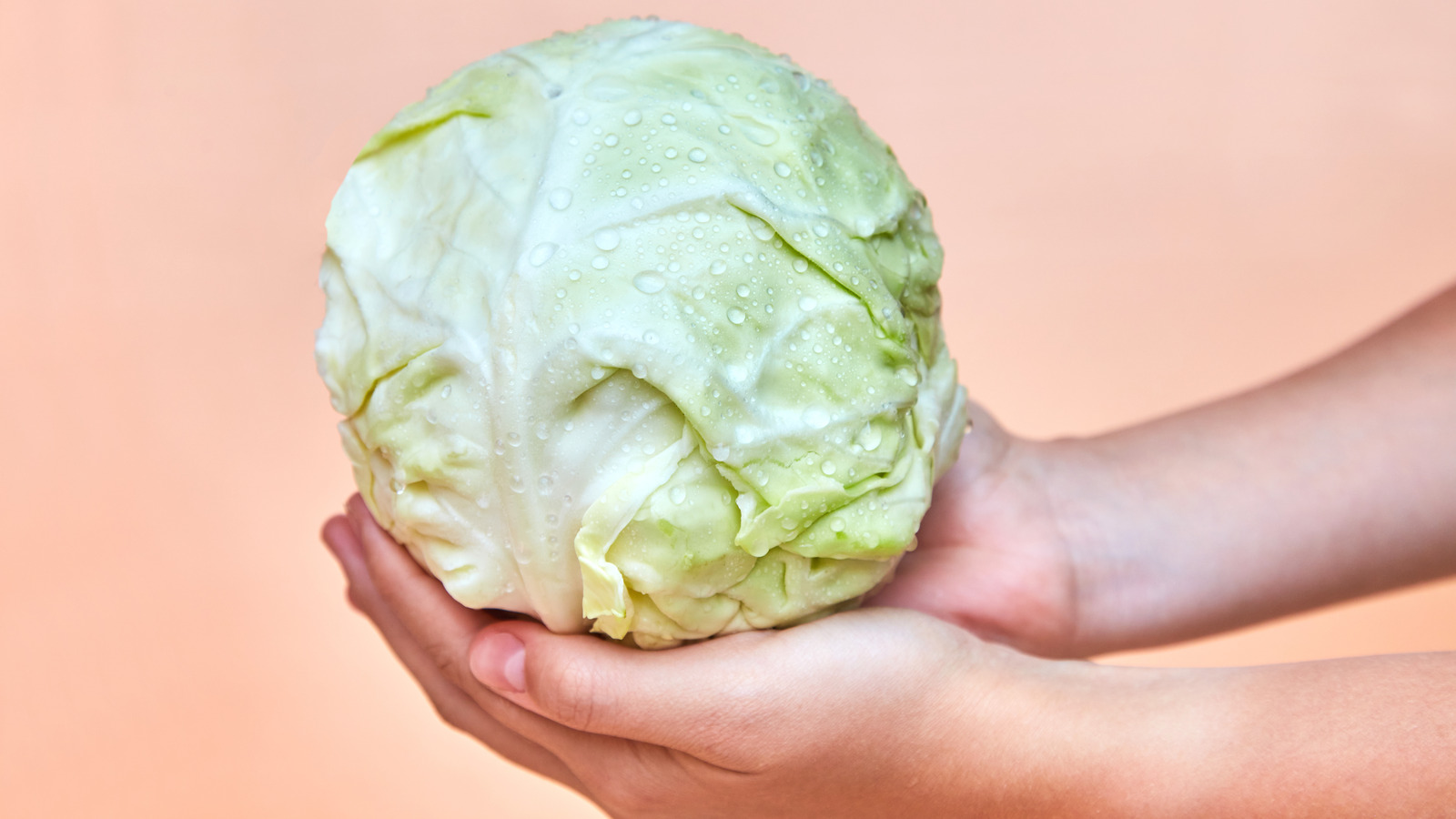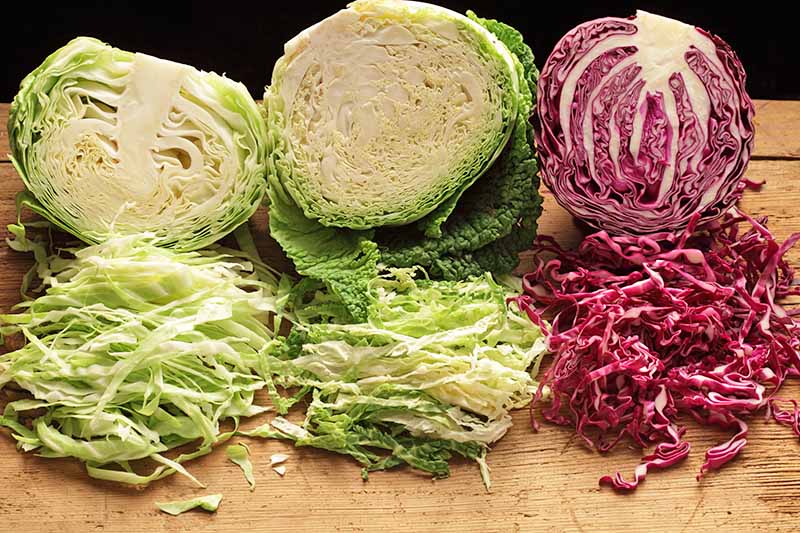Exploring the Health Implications of Eating Raw Cabbage
Eating raw cabbage consumption has been a culinary practice with historical significance and cultural relevance across various cuisines worldwide. Its versatility in dishes such as salads, slaws, and wraps highlights its widespread usage. Understanding the health implications of consuming raw cabbage is becoming increasingly important in the context of modern dietary trends towards health-conscious eating habits. This paper aims to explore the nutritional benefits and potential risks associated with raw cabbage consumption, considering its historical context and cultural significance.
Contents
I. Nutritional Composition of Raw Cabbage
Macronutrients and Micronutrients Present
Raw cabbage is a nutritional powerhouse, rich in essential macronutrients and micronutrients vital for overall health. In terms of macronutrients, raw cabbage is low in calories and carbohydrates, making it an excellent choice for those watching their calorie intake or following low-carb diets. It also contains a small amount of protein and negligible fat content, making it a versatile addition to various dietary preferences.
In addition to macronutrients, raw cabbage is abundant in micronutrients essential for various physiological functions. It is particularly noteworthy for its high vitamin C content, providing a significant portion of the daily recommended intake in just one serving. Vitamin C is crucial for immune function, collagen synthesis, and antioxidant defense against free radicals. Raw cabbage also supplies vitamin K, important for blood clotting and bone health, as well as minerals like potassium, calcium, and manganese.

Furthermore, raw cabbage is a good source of dietary fiber, which supports digestive health by promoting regular bowel movements and fostering a healthy gut microbiome. The fiber content in cabbage contributes to feelings of fullness and satiety, making it beneficial for weight management efforts.
Comparison with Cooked Cabbage
While both raw and cooked cabbage offer nutritional benefits, there are differences in their nutrient profiles due to the effects of cooking. Cooking cabbage can lead to the loss of certain water-soluble vitamins, such as vitamin C and B vitamins, especially when boiled or steamed for extended periods. However, cooking can also enhance the bioavailability of certain nutrients, such as lutein and zeaxanthin, which are important for eye health.
Despite potential nutrient losses during cooking, cooked cabbage remains a nutritious option, retaining many of its essential vitamins and minerals. The choice between raw and cooked cabbage ultimately depends on personal preference, culinary preferences, and dietary goals. Incorporating a variety of both raw and cooked vegetables into the diet ensures a diverse nutrient intake and maximizes health benefits.
Dietary Significance and Recommended Intake
Including raw cabbage in the diet provides numerous health benefits and supports overall well-being. Its low calorie and high nutrient density make it an ideal food for promoting satiety while meeting essential nutrient needs. Raw cabbage can be consumed in various forms, such as salads, coleslaw, wraps, or as a crunchy snack, offering versatility in meal preparation.
The recommended intake of raw cabbage varies depending on individual dietary requirements and preferences. However, including a serving of raw cabbage in meals several times a week can contribute to meeting daily nutrient needs and supporting optimal health. Pairing raw cabbage with other colorful vegetables and lean protein sources enhances the nutritional value of meals and adds diversity to the diet.
In conclusion, raw cabbage is a nutritional powerhouse packed with essential vitamins, minerals, and fiber. Whether consumed raw or cooked, cabbage offers numerous health benefits and can be a valuable addition to a balanced diet. Including raw cabbage in meals regularly supports digestive health, immune function, and overall well-being, making it a nutritious choice for individuals of all ages.
II. Health Benefits of Eating Raw Cabbage
Antioxidant Properties and Their Role in Disease Prevention
Raw cabbage is renowned for its potent antioxidant properties, which play a pivotal role in protecting the body against oxidative stress and preventing chronic diseases. Antioxidants, such as vitamin C, beta-carotene, and flavonoids, neutralize harmful free radicals, thereby reducing cellular damage and inflammation. Regular consumption of raw cabbage has been associated with a decreased risk of various conditions, including heart disease, cancer, and neurodegenerative disorders. The abundance of antioxidants in raw cabbage makes it a valuable addition to a health-conscious diet, supporting overall well-being and longevity.
Vitamin C Content and Immune System Support
One of the standout features of raw cabbage is its exceptionally high vitamin C content. Vitamin C is a water-soluble nutrient renowned for its immune-boosting properties. It plays a crucial role in supporting the immune system by enhancing the function of immune cells, such as lymphocytes and phagocytes, and promoting the production of antibodies. Regular consumption of raw cabbage can help strengthen the body’s defenses against infections, such as the common cold and flu, and reduce the severity and duration of illness. Incorporating raw cabbage into the diet is particularly beneficial during periods of increased susceptibility to infections or when immune support is needed.
Fiber Content and Digestive Health Benefits
Raw cabbage is a rich source of dietary fiber, which is essential for maintaining optimal digestive health. Fiber aids in digestion by promoting regular bowel movements, preventing constipation, and supporting the growth of beneficial gut bacteria. The insoluble fiber found in raw cabbage adds bulk to the stool, facilitating its passage through the digestive tract and promoting regularity. Additionally, fiber acts as a prebiotic, nourishing beneficial bacteria in the gut microbiome and promoting a healthy balance of intestinal flora. By incorporating raw cabbage into the diet, individuals can support digestive health, alleviate constipation, and reduce the risk of digestive disorders, such as diverticulosis and irritable bowel syndrome (IBS).
In summary, eating raw cabbage offers a multitude of health benefits, including antioxidant protection against chronic diseases, immune system support due to its high vitamin C content, and digestive health benefits attributed to its fiber content. By incorporating raw cabbage into meals regularly, individuals can harness its nutritional power to promote overall health and well-being.
III. Potential Risks and Considerations
Digestive Discomfort and Gas Production
While raw cabbage offers numerous health benefits, it can also cause digestive discomfort and gas production in some individuals. This is primarily due to cabbage’s high fiber content, particularly insoluble fiber, which may be challenging for certain digestive systems to process efficiently. Consumption of raw cabbage in large quantities or by individuals with sensitive digestive systems can lead to bloating, gas, and abdominal discomfort. To mitigate these effects, individuals can gradually increase their intake of raw cabbage, chew it thoroughly to aid digestion, and combine it with other easily digestible foods.

Goitrogenic Effects on Thyroid Function
Raw cabbage contains compounds known as goitrogens, which can interfere with thyroid function by inhibiting the uptake of iodine. While the goitrogenic effects of raw cabbage are generally mild and pose little risk to most individuals, they may be of concern for those with thyroid disorders or those taking thyroid medication. In such cases, excessive consumption of raw cabbage may exacerbate existing thyroid conditions or interfere with thyroid medication efficacy. To minimize the risk of adverse effects, individuals with thyroid issues should consume raw cabbage in moderation and ensure adequate iodine intake from other dietary sources.
Allergic Reactions and Food Sensitivities
Although rare, some individuals may experience allergic reactions or food sensitivities to raw cabbage. Allergic reactions to cabbage can manifest as skin rashes, itching, swelling, or gastrointestinal symptoms such as nausea, vomiting, or diarrhea. Individuals with known allergies to other members of the Brassicaceae family, such as broccoli or cauliflower, may be at a higher risk of developing allergic reactions to raw cabbage. Additionally, cross-reactivity between cabbage and other allergens, such as pollen or latex, may occur in certain individuals with multiple allergies. It’s important for individuals with known food allergies or sensitivities to exercise caution when consuming raw cabbage and seek medical advice if allergic reactions occur.
In conclusion, while raw cabbage offers numerous health benefits, it’s essential to be mindful of potential risks and considerations associated with its consumption. By being aware of digestive discomfort, goitrogenic effects on thyroid function, and allergic reactions, individuals can make informed decisions about incorporating raw cabbage into their diet and mitigate any adverse effects. Consulting with a healthcare professional or registered dietitian can provide personalized guidance and support for individuals with specific dietary concerns or medical conditions.
IV. Culinary Uses and Preparation Techniques
Popular Raw Cabbage Dishes from Around the World
Raw cabbage is a versatile ingredient used in various cuisines worldwide, offering a crunchy texture and refreshing flavor to dishes. Some popular raw cabbage dishes include:
- Coleslaw: A classic dish made with shredded raw cabbage dressed with mayonnaise or vinaigrette, often accompanied by carrots, onions, and other vegetables.
- Kimchi: A traditional Korean fermented dish made with seasoned raw cabbage and other vegetables, offering a tangy and spicy flavor profile.
- Sauerkraut: A fermented cabbage dish originating from Germany and Eastern Europe, characterized by its sour taste and crunchy texture.
Methods of Preparation and Serving Suggestions

There are numerous ways to prepare and serve raw cabbage to enhance its flavor and nutritional value:
- Shredded: Raw cabbage can be shredded thinly using a knife or a mandoline slicer to create a delicate texture ideal for salads or coleslaw.
- Sliced: Cabbage can be sliced into thin strips or wedges and used as a crunchy topping for tacos, sandwiches, or wraps.
- Fermented: Fermenting raw cabbage with salt and spices produces tangy and probiotic-rich dishes like kimchi or sauerkraut, which can be enjoyed as condiments or side dishes.
- Pickled: Pickling raw cabbage with vinegar, sugar, and spices adds a sweet and tangy flavor, perfect for sandwiches, burgers, or as a side dish.
Incorporating Raw Cabbage into a Balanced Diet
Including raw cabbage in a balanced diet offers numerous health benefits and culinary possibilities:
- Salads: Add shredded raw cabbage to salads for extra crunch and nutrition. Combine it with other vegetables, fruits, nuts, and seeds for a colorful and flavorful salad.
- Wraps: Use large cabbage leaves as a low-carb alternative to tortillas or bread for wraps and sandwiches. Fill them with lean protein, vegetables, and condiments for a nutritious and satisfying meal.
- Snacks: Enjoy raw cabbage as a crunchy and refreshing snack on its own or paired with hummus, yogurt dip, or nut butter for added flavor and protein.
- Side dishes: Serve raw cabbage as a side dish alongside grilled meats, fish, or vegetarian mains. Season it with herbs, spices, and dressings to enhance its flavor and complement the main course.
By incorporating raw cabbage into a variety of dishes and meal preparations, individuals can enjoy its nutritional benefits and culinary versatility as part of a balanced diet. Whether enjoyed as a crunchy salad, tangy ferment, or crunchy snack, raw cabbage adds texture, flavor, and nutrition to meals, making it a valuable ingredient in any kitchen.
| Aspect | Summary |
|---|---|
| Nutritional Composition | Rich in vitamins (especially vitamin C and K), minerals, and fiber. |
| Health Benefits | Antioxidant properties, immune system support, and digestive health benefits. |
| Potential Risks | Digestive discomfort, goitrogenic effects on thyroid function, allergic reactions. |
| Culinary Uses | Salads (e.g., coleslaw), wraps, fermented dishes (e.g., kimchi), pickled. |
| Preparation Techniques | Shredded, sliced, fermented, pickled. |
| Incorporation into Diet | Salads, wraps, snacks, side dishes. |
Eating raw cabbage provides significant nutritional benefits but should be consumed in moderation due to potential risks such as digestive discomfort and goitrogenic effects. It’s important to balance cabbage intake with a diverse diet and be mindful of individual tolerance. Seeking professional advice is advisable for those with specific dietary concerns. By incorporating raw cabbage sensibly, individuals can enjoy its nutritional advantages while promoting overall health.
Cabbage -The Benefits and Risks of Eating Cabbage at Night
Cabbage Pudding: A Culinary Through Tradition and Innovation
Homemade Stuffed Cabbage Rolls with Meat: A Complete Guide
Exploring the Culinary Legacy: Stir-fried Cabbage with Eggs
Stir-Fried Cabbage with Tomatoes: A Culinary Journey Across Cultures
Cabbage Rolls with Meat: A Classic Comfort Food
Delectable Stir-fried Cabbage with Shrimp